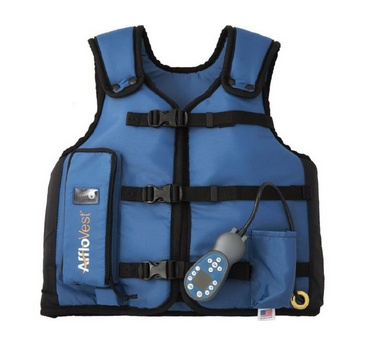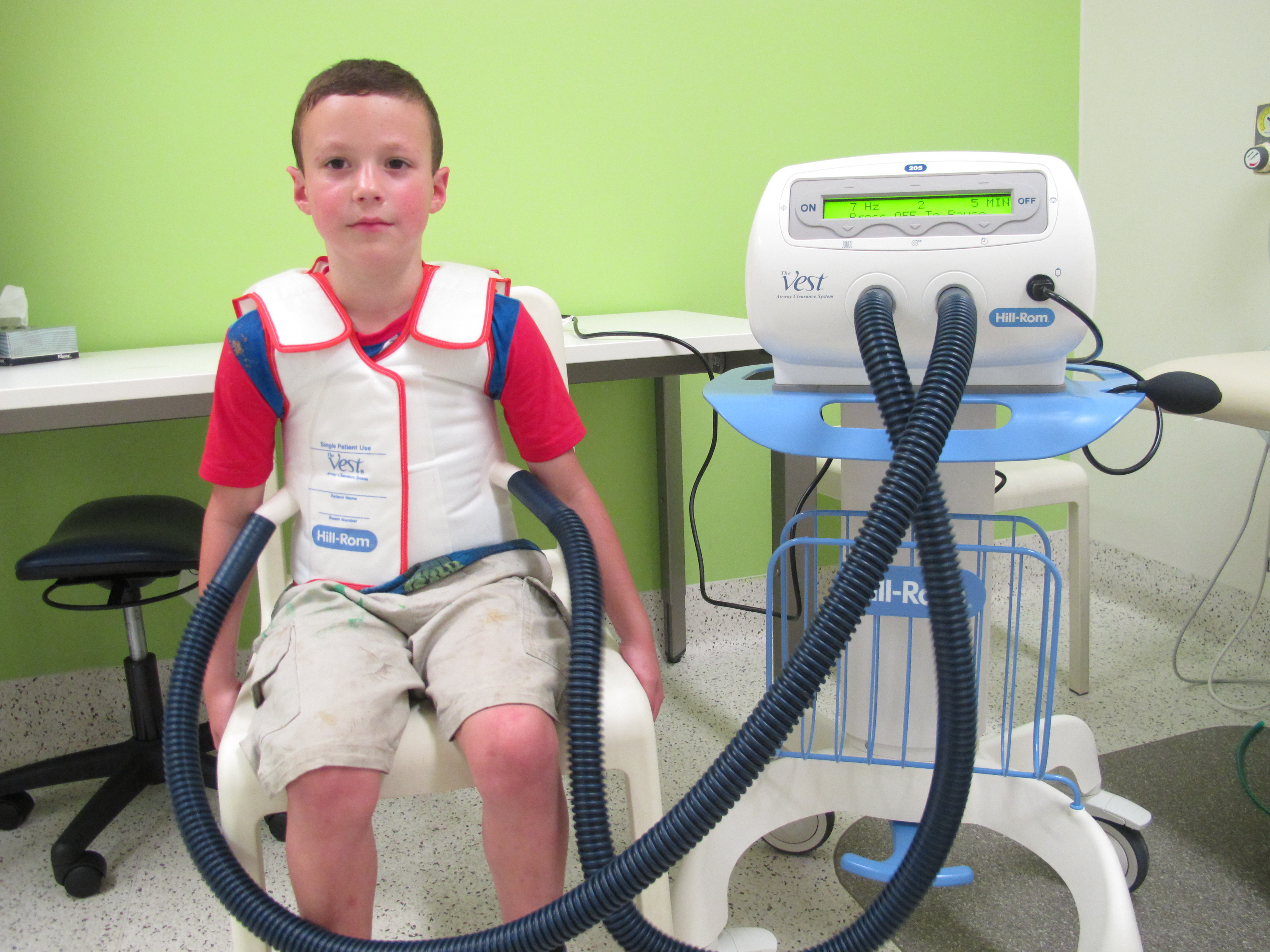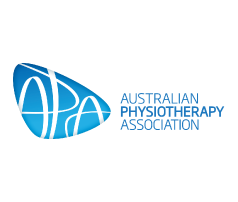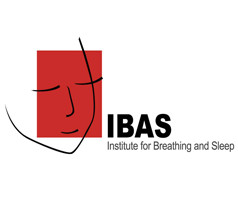High Frequency Chest Wall Oscillation (HFCWO) in children
What is the technique?



Physiology
HFCWO uses positive and negative pressure changes to augment peripheral and tracheal mucus movement towards the airway opening (Gross & King, 1984). Air pulses are transmitted to the vest at a high frequency increasing oscillatory chest wall compressions. During inflation the pressure increases to between 5 and 20 cm H2O causing a short burst of expiratory flow of up to 1.6L/second. The device usually operates between 2 and 25Hz.
It is thought that secretion mobilization is enhanced by the use HFCWO by increasing the air-liquid sheer forces during expiration. Another theory is that displacement of the airway walls may disengage secretions and enhance the effect of air-liquid flow. HFCWO is also thought to enhance ciliary beating and change the tenacity of bronchial secretions, making them less thick and therefore easier to expectorate (Hansen & Warwick, 1990).
Prescription of the technique
HFCWO allows the patient to receive treatment to a large portion of their lung in a variety of modified postural drainage positions. It can be also done in sitting, thereby eliminating issues associated with reflux and certain modified positions.
HFCWO can be administered by a physiotherapist, appropriately trained carer, or the patient themselves, allowing the potential for independent treatment.
Can combine HFCWO therapy with a mucolytic inhalation and intersperse every 5 minutes with periods of either PEP therapy and huffing and coughing to clear the mucus.
A program can be set up whereby the frequency and pressure is adjusted approximately every 5 minutes or as indicated to assist with sputum movement from the peripheral to the more central airways.
Contraindications and Precautions
Contraindications:
Unstable neck injury
port being accessed under vest
pulmonary embolism
lung contusion
current haemoptysis
haemodynamic instability
rib fractures
large pleural effusion or empyema.
Precautions:
end stage disease (end expiratory volume may fall below closing capacity)
port under the vest (not currently accessed)
recent oesophageal surgery
distended abdomen
bronchospasm
osteoporosis
coagulopathy
Benefits
Can be used independently
Can be combined with a mucolytic via a nebuliser
May be useful in children with bronchiectasis and a co-morbidity who are unable to actively perform airway clearance therapy
Disadvantages
It is very expensive and not very portable
It is heavy (about 8kg) and noisy which may embarrass some patients who would prefer a quiet and discreet device
Does not require active participation by the patient, however more recently patients are incorporating inhalation therapy, huffing and PEP therapy into the regimen
It may decrease thoracic mobility
Evidence for the clinical application of HFCWO
HFCWO has been found to be safe and have variable efficacy in children (over the age of 7yrs) and adults with mild to moderate cystic fibrosis in an exacerbation during the hospitalisation phase and at home during the maintenance phase ((Darbee, Kanga, & Ohtake, 2005), (Kempainen et al., 2010), (Oermann, Swank, & Sockrider, 2000), (Osman, Roughton, Hodson, & Pryor, 2010).
Sputum clearance with HFCWO is reported to be similar to PEP therapy (Braggion et al 1995) however other authors report that it is less effective than ACBT (Pike et al 2004).
A more recent study long term study comparing PEP therapy and HFCWO found a significant difference in terms of number of pulmonary exacerbations and time to first pulmonary exacerbation, in favour of PEP mask therapy. The author concluded that the use of the HFCWO as a primary airway clearance in children with CF should not be supported (McIlwaine et al 2013).
There is currently no evidence for the use of this device for children with non-CF bronchiectasis.
Although HFCWO devices are not readily available in Australia, many other airway clearance options available that are cheaper and highly effective.








